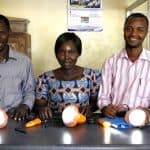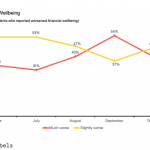Optimizing Online Auctions: How Technology Can Help to Alleviate Poverty among Smallholder Farmers, One Bid at a Time
Agriculture plays a major role in the economy of most developing countries, yet many farmers live in poverty. World Bank data shows that 78% of the world’s poorest people are farmers. A critical challenge for these farmers is the lack of infrastructure in rural areas to improve their market access, price transparency and competitive position, as compared to the more powerful downstream buyers (e.g., traders and processors).
Several governments have led reforms to address these issues with digital agricultural platforms. The idea is to connect geographically distant markets through a single platform. Most of these platforms are within one country (if the country is relatively small), or within a region in a country (as in the case I’ll discuss below, in India). The goal is to enable farmers who traditionally sold in one physical market to possibly sell to buyers in multiple markets/locations through the digital platform. By providing a common platform, these initiatives can increase market competition and enhance price transparency – ultimately improving smallholder farmers’ revenues and lifting them out of poverty.
An Innovative Digital Agricultural Platform in India
To assess the impact of these platforms on farmers’ profits, my colleagues and I at the MIT Sloan School of Management conducted a rigorous econometric analysis in collaboration with the state government of Karnataka, India. We studied the government’s digital Unified Market Platform (UMP), which was created in 2014 to unify all trades in the state’s agricultural wholesale markets. Prior to the launch of the UMP, these markets traditionally worked as follows. Every morning during the harvest season, farmers would bring their harvests to a market and sell to traders (who could be processors or intermediaries) via commission agents. Each farmer’s harvests were organized in a “lot” (e.g., three 100-kg bags of peanuts). Throughout the day, traders would visit the commission agents’ shops, examine the quality of the commodities, and engage in auctions or direct negotiations to purchase all the lots that interested them. Each auction or negotiation was done on a single lot. Once the trade was finalized, the winning trader would pay the total price plus a commission to the agent, who later paid the farmer.
This market structure and trade process was not favorable to farmers. First, lack of transportation and storage capabilities meant that farmers could only sell their commodities at nearby markets. Second, since traders needed a separate license to participate in each market, there were usually a small number of traders buying the products, increasing their market power. In addition, traders typically bought commodities during harvest seasons when supply was high, so demand was uneven throughout the year. Finally, the trading process was conducted through undocumented, hand-written tender slips, which invited collusion and coordinated bidding among traders, as well as price manipulations with the commission agents. All of these issues resulted in lower sale prices and poor revenue for the farmers.
The UMP attempts to address each of these issues: It replaces the typical manual auction process with an online sealed-bid auction. Traders must submit private bids for all of the lots they want to purchase on the UMP by a pre-announced cut-off time. Once this time window has passed, the platform compares all the bids for each lot, and the highest bidder is declared the winner. To attract more bids, all the lots that arrive at a market are recorded on the UMP and visible to all traders across the state. In addition, the government has implemented a single-license system for traders, which covers the entire state – so now traders can easily bid for lots from multiple markets. The platform has also digitized the process of generating transport permits and bills, to facilitate the post-trade process for traders. And to increase price transparency and convenience for farmers, there are now computer kiosks where they can check commodity prices in markets across the state, and the UMP sends them text messages when they’ve made a sale through the system.
Assessing the Unified Market Platform’s Impact on Farmers
By November of 2019, commodities valued at US $21.7 billion had been traded on the UMP. We found that farmers who used the platform were seeing a significant profit improvement of 26% to 159% for some crops – like rice, peanuts and corn. However other crops, like lentils and cotton, didn’t benefit at all. What accounted for this difference?
We discovered that the underlying operational and supply chain design of the platform plays a significant role in whether farmers benefit from it. One major design factor is efficiency: Is the platform more efficient than the old manual process? We saw that the platform had more impact for commodities, like rice, corn and peanuts, whose supply is more fragmented. This is because the more efficient online bidding process (as compared to the old manual process) allows traders to bid on more lots within the day. This in turn leads to more bids per lot and higher sale prices for farmers.
Our analysis leads to a number of important policy recommendations, which could help to further boost the benefits of the UMP to farmers:
- The system could provide integrated logistics, e.g., by offering post-auction sorting, packing and transportation services to traders. This would further encourage and facilitate cross-market trading among the 170 markets connected by the UMP in Karnataka;
- It could also pool products of similar quality to further reduce traders’ search costs and enhance their bidding efficiency;
- It could optimize the auction design by choosing a format that would lead to the highest revenue for farmers – taking into account the operational factors and behavioral dynamics of farmers and traders on the ground. This would increase market competition and strengthen farmers’ bargaining power.
These findings are valuable because they can inform governments about which design elements to include in their own platforms – not just on the digital side, but the physical operational side too.
Improving the Impact of Digital Platforms on Farmers
In our assessment of the government’s digital agricultural platform in Karnataka, we identified several areas that could be improved. We observed that a high ratio of farmers to traders is a barrier to the success of the platform: The lower the number of traders bidding for agricultural products, the less likely it is that the digital platform would help farmers. This makes sense because if a commodity – like lentils – only has a small number of dominant buyers, then it is still possible for the buyers to engage in coordinated bidding and reduce competition in the market.
To enhance competition among traders for these commodities, our research team designed a new two-stage auction mechanism for the UMP in Karnataka. The design process is based on the unique operational and behavioral characteristics in the market. The mechanism is fairly simple: In the first stage, everyone bids on lots privately in the platform’s online sealed-bid auctions, as usual. But at the end of the first stage, the UMP reveals to the top three bidders the current highest bid. Then, these top three bidders are qualified to bid again, but they can only match or outbid that highest bid from the first stage. At the end, whoever bids the highest amount is the winner of that lot.
We piloted this new auction design in a major lentils market connected by the UMP, and compared the results to another comparable market that used the old design. The 10,000 farmers who sold through the new two-stage auction benefited from a profit gain of 60% to 158% in only three months. Encouraged by this success, the government plans to expand this two-stage auction design to other commodities and markets.
At MIT Sloan, we are part of the Food Supply Chain Analytics and Sensing Initiative, which is committed to addressing challenges in the food and agriculture space. We are proactively developing additional collaborations in other states in India, and identifying opportunities to apply our learning to other countries with similar agricultural challenges.
Helping farmers rise out of poverty will need a multidisciplinary approach that brings together research, technology and on-the-ground efforts. It won’t happen overnight, but we can make a positive difference for farmers over time, and ultimately contribute to the global supply of safe and nutritious food.
Yanchong (Karen) Zheng is an associate professor of operations management at the MIT Sloan School of Management.
Photo credit: Well-Bred Kannan (WBK Photography)
- Categories
- Agriculture



